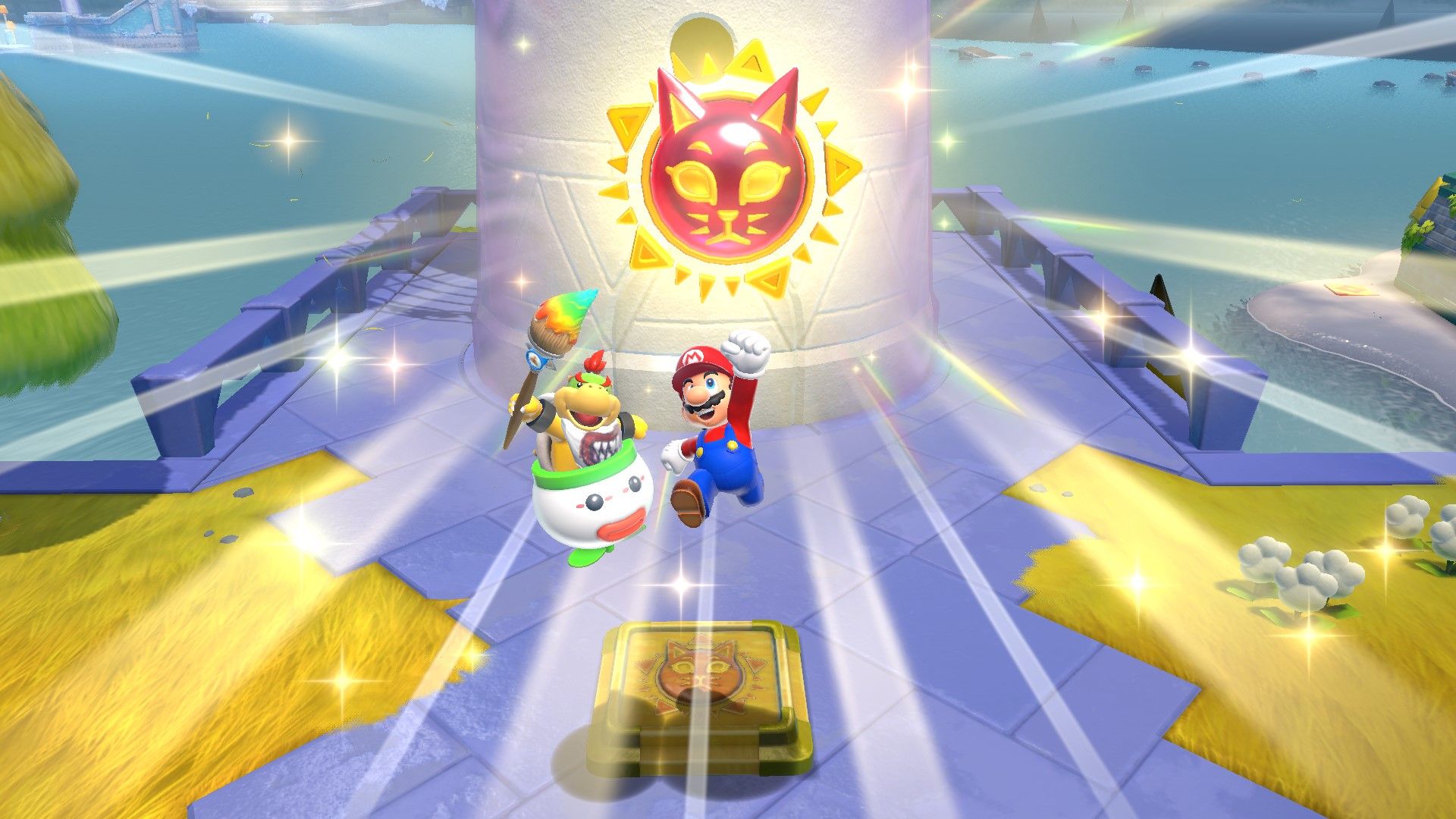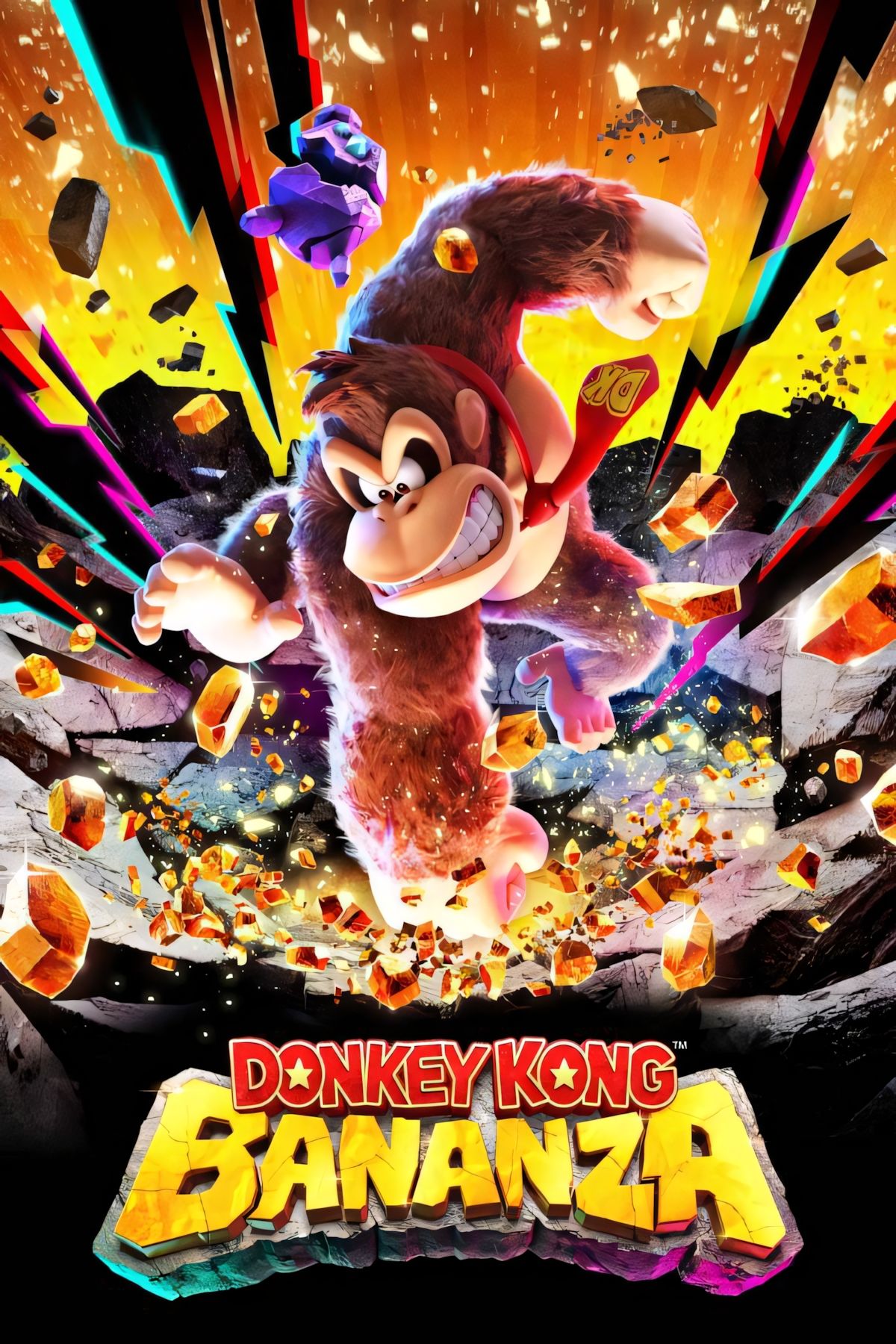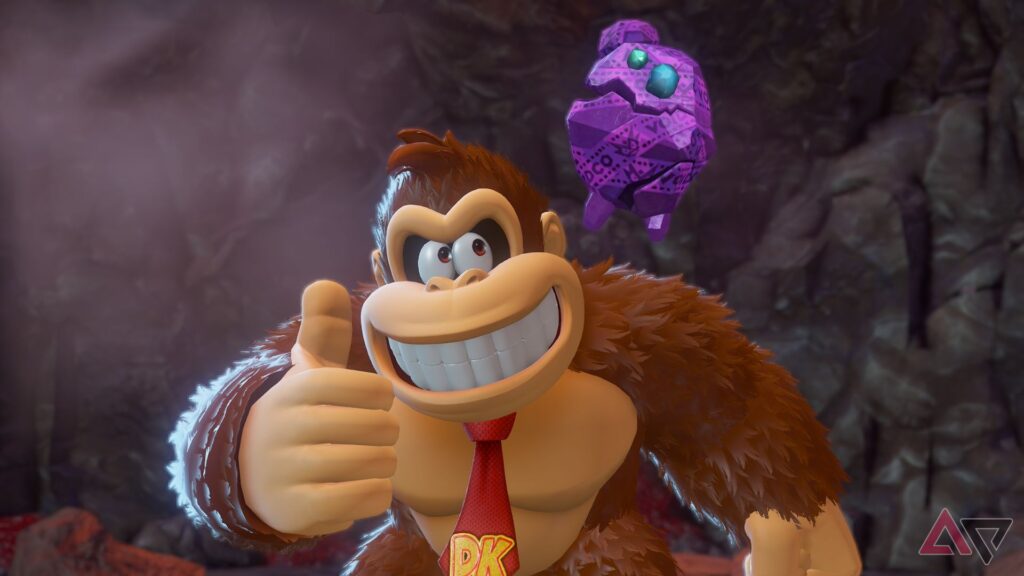Donkey Kong Bananza is my favorite Nintendo Switch 2 game, and it’s going to be tough for another title to dethrone it. That might not seem like much two months into a new system’s lifespan, but Donkey Kong Bananza is also the best game I’ve played this year. Nintendo’s latest release not only delivers an entertaining story, reimagining one of its earliest icons, but also rethinks how players interact with a 3D platformer.
In this game, players can smash through and destroy or pick up and throw huge chunks of the very levels they are platforming through. This is not only satisfying in an inherent, visceral way, but also offers players a sense of freedom in how they approach every objective the game throws their way. While the camera and frame rate can’t always keep up, they don’t need to for this adventure to be an unforgettable, absolute blast.
Donkey Kong Bananza
- Released
-
July 17, 2025
- ESRB
-
Everyone 10+ // Fantasy Violence
- Developer(s)
-
Nintendo
- Publisher(s)
-
Nintendo
- Number of Players
-
Single-player
- Lighthearted but heartfelt story
- Emphasis on destruction
- Jam-packed with collectibles to find
- Industry-leading level design
- Offers lots of player freedom
- Wonky camera
- Inconsistent frame rate
Price and Availability
Donkey Kong Bananza is available for $70, which is cheaper than Mario Kart World but more expensive than all other Nintendo Switch 2 games, except for The Legend of Zelda: Tears of the Kingdom. You get well over 15 hours of amazing gameplay for that price, so it’s worth it. The game is available digitally on the Nintendo Switch eShop and physically at all major retailers that carry video games, as it launched on July 17.
A light but touching story
Move over Joel and Ellie, Donkey Kong and Pauline are my new favorite duo
At first, Donkey Kong Bananza offers up a pretty clean break from previous games starring DK. It opens with him coming to a new location called the Ingot Isle in search of Bananas, which take a gold-like form there. DK’s new design took a bit of getting used to, but I came to love how much more expressive he and his look fits the colorful nature of this game so well.
Shortly after DK arrives, a new villain named Void Kong and his dastardly company VoidCo arrive, steal all the bananas that DK and his friends have collected, and send DK and everyone else on Ingot Isle plummeting into the depths of the planet. From his design to his gibberish vocal performance, Void Kong feels instantly iconic, and I hope he pops up in Mario Kart or Mario Party in the future. As Donkey Kong Bananza goes on, it finds more ways to pay tribute to the series’ past as well.
Early on, DK encounters a being called Odd Rock who climbs on his back and starts traveling with him. By the end of the first area, Odd Rock is revealed to be a young version of Pauline, who convinces DK to embark on a journey to the planet’s core to grant their wish. While Donkey Kong just wants bananas, Pauline wishes to get back to the surface so she can pursue a career as a performer. It’s pretty simple, but this is also my favorite narrative of any Nintendo platformer.

Related
There has never been a better time for 3D Mario fans to play Bowser’s Fury
Bowser’s Fury does not get the love it deserves
Although it’s as light in tone as a kids’ cartoon for the most part, Donkey Kong Bananza’s simple story about Pauline embracing what she loves and forming a father-daughter-like bond with DK resonated with me. All the smaller moments, like Pauline’s cute banter with DK while resting or DK’s reaction when he briefly loses track of Pauline, make the game for me.
It engages my brain in the same way father-child stories like The Last of Us and God of War: Ragnarok do, but in a significantly more lighthearted and jovial way. Family stories don’t always have to be about the pain that comes with that.
An expansive 3D platformer
There are tons of collectibles to track down
Donkey Kong Bananza is separated into multiple hub-like levels, but in this game’s case, there are sublayers of the planet that each have their own theming and residents. You’ll encounter everything from ostacrichs who run a hotel over a poisonous swamp, harkening back to Super Mario Sunshine, to a giant amusement park where the ground is food. The sublayer setup provides the game with a clear sense of progression, as players navigate their way through it in a somewhat linear fashion.
Nintendo’s industry-leading level design is once again flexing its muscles in Donkey Kong Bananza. Some of my favorite areas included the Banandium Refinery, where I got to ride around on mine carts while throwing explosives at enemies, and Coolstripe Cavern, where I could tear chunks out of the icy terrain I was slipping and sliding around on. Each objective rewards players with Golden Bananas, which come in bunches of one, three, or five.
That’s this game’s version of a Star or Shine Sprites, and they’re even more intertwined with gameplay because collecting five will earn players a skill point to improve their abilities with. There are plenty of other collectibles to search and dig for, including gold, Banandium Gems that can be traded for Golden Bananas, and fossils that can be traded for cosmetics.
That wealth of collectibles plays into one of the best aspects of playing Donkey Kong Bananza. There was always an objective or platforming challenge to complete, but at almost any time, I could start punishing the ground or walls around me and find some reward. It offers a kind of catharsis I’ve only ever gotten from intense first-person shooters like Doom: The Dark Ages, but in kid-friendly form.
Impressive destruction
Rethinking how players interact with 3D platformers
Source: Nintendo
The allowance for destruction that’s in players’ hands is the main draw of Donkey Kong Bananza, but it’s also a solid 3D platformer in its own right. If you were trying to destroy as little as possible while playing, you’d still have a good time jumping, rolling, and climbing around all the game’s different locales. The destruction element is just the cherry on top, the twist that forces players to interact with a video game world in a way they haven’t done before in a platformer.
It might be possible to find a way to climb up a cliffside to get a Golden Banana, but it might also be just as gratifying to punch through and up that cliff to reach the same point, getting other collectibles along the way. Or, I could use a Bananza, one of five special forms DK can take with Pauline’s help that add abilities like dashing, gliding, and high-jumping. There’s no shortage of tools players have at their disposal at any given time, and Donkey Kong Bananza rarely restricts what players can do.
All of these gameplay features work together to enact a sense of freedom that simultaneously deepens the player’s familiarity with the world. At the start of Donkey Kong Bananza, I stopped to check the sturdiness and type of every material I was picking up. By the end of the game, I intrinsically knew how to use most types of terrain I came across. Playing Donkey Kong Bananza is already starting to feel like I’m revisiting a childhood favorite, even though it has only been out for around a week.
Performance and camera issues
The low points of Donkey Kong Bananza
While Donkey Kong Bananza does so much correctly, there are a couple of things it doesn’t quite nail. The most egregious of these is the camera, which often became stuck in unusual positions or failed to display what I wanted to see when navigating through the tunnels, particularly if they were relatively small or located in an unusual area of the level. It is, thankfully, never an issue when precision is needed, but it’s a little disappointing that Nintendo did not find a way to solve a problem that’s so commonplace on 3D platforms.
Additionally, for those of you who care about the frame rate and general performance of your games, Donkey Kong Bananza does sometimes struggle to keep a consistent frame rate. In certain hectic boss fights or moments where I was destroying a lot, Donkey Kong Bananza would noticeably chug, even when I adjusted system-level settings to lower the resolution or disable HDR.
While these are both issues that I can’t recommend Donkey Kong Bananza without noting, neither hampered my experience enough to ruin the game for me. Controls always stayed responsive, and I never had to reset progress or experience an unfair death due to a camera issue. Any moments of annoyance with this game are few and far between.
Should you buy Donkey Kong Bananza?
If you own a Nintendo Switch 2, you need to buy Donkey Kong Bananza. The occasional camera or frame rate issue isn’t enough to detract from the game’s beautiful core. The game is Nintendo at its best, rethinking the basics of interaction in a well-trodden game genre in a genius way. If Donkey Kong Bananza ushers in a wave of environmentally destruction-focused titles, the video game industry will be better for it.
It’s fun to platform through the tough challenges Nintendo designed for players, and it’s equally enjoyable to ape out and see just how deep you can dig when first exploring a new level. And at the heart of it all, there’s a charming story about embracing creativity, overcoming stage fright, and forming unbreakable bonds that I won’t forget anytime soon. Donkey Kong Bananza is the best game I’ve played in 2025, and it’s going to be very tough for any other game this year to dethrone it.

Donkey Kong Bananza
- Released
-
July 17, 2025
- ESRB
-
Everyone 10+ // Fantasy Violence
- Developer(s)
-
Nintendo
- Publisher(s)
-
Nintendo
- Number of Players
-
Single-player
- Nintendo Switch 2 Release Date
-
July 17, 2025




